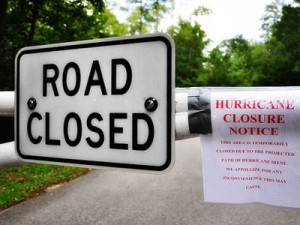Our popular business beat basics series is now available all in one place in ebook form for your convenience. Go here to download the Reynolds Center’s free ebook, Business Beat Basics.
***
It’s called insurance, but this beat is really about people, and the bad things that they hope won’t happen.
It’s about bills everyone pays, for products they are forced to buy, with little understanding of what they get in return. It’s about tragedy, families stricken with illness and death, households and communities struggling to overcome disaster.
(It could also be about financial funds inventing exotic insurance policies to trade on global markets – the stuff the sub-prime crisis was built on – but that would take another beat primer entirely.)
The human connection to every insurance story is why, when properly drawn, they will attract a large and attentive audience.
What the reader requires is a translator.
A brief history will help.
Insurance dates back to ancient Greece and Rome, but the foundation for the modern form was laid out in a coffeehouse in London, called Lloyd’s. Shipping interests met here in the late 1600s and, between the gossip, made agreements that if any vessel went down at sea, all of the owners would split the loss. The contracts took a disaster that would ruin any one owner and cut it into bite-sized pills everyone could swallow. Brokers handling the trades were free to earn interest on the money they held, and the modern insurance company was born.
The packages surrounding these transactions can be incredibly complex, but at its core, insurance is about the pooling of risk. Actuaries and underwriters are employed to make sure each participant pays its fair share for the risk they bring to the pool. And insurers, traditionally, make their profit off the “float,” the time they have the money in their hands to invest.
That no one seems satisfied to leave it at that makes this a lively beat. “Never underestimate the power of fear or greed,” the CEO of a reinsurance company told investors in an attempt to explain his trade.
These tutorials and white papers are helpful starting points, but remember they are written by an industry poised to make money. Often missing is the consumer perspective.Insurance companies and their trade organizations are well-funded and equipped to provide reporters large amounts of canned explanations and data on any aspect of risk, whether it’s no-fault coverage for auto owners or limits on jury awards.
For that reason, insurance reporters need to approach the beat with extra skepticism, and especially at first, seek very good sources. Retired regulators, company executives and others who have no dog in the hunt are invaluable. They can help turn insurance documents into English, decipher convoluted rate filings and point out the endgame.

Rating analysts, brokers and hometown insurance agents also are good at providing a reality check.
It won’t be long before your own common sense fills in the missing pieces.
I also have a rule for insurance reporting: eat raw.
Because insurance is the sale of nothing but a promise, words that can be manipulated, it is one of the most regulated industries in the world. That means state regulators and their national trade group sit atop mountains of financial filings, audits, market-conduct exams and other wonderful finds.
Their ready availability gives a reporter no reason to stop at the company press release or the regulatory statement.
Rate filings will identify who or where the rate hikes are highest. They will shed light on questionable practices, such as using consumer credit scores to price policies, or to deny coverage to entire groups of people or communities.
Market-conduct reports bring more insight into bad business practices as well as what regulators are doing about them. And license applications show who is fronting the money behind the newest faceless enterprise.
Insurance also is a business built on adversarial relationships.

Carriers make more money when they give less of it to policyholders. Sometimes that means eliminating fraud. Sometimes it means just claiming fraud. The creative ways employed by insurers to deny and delay claims creates a healthy business for trial lawyers who sue them and means perpetual employment for the lobbyists hired to rewrite state tort laws to stop the trial lawyers.
Be wary of being used as a pawn in that battle, but use the field to your advantage. And remember that at the center are compelling human stories and public interests.
Bloomberg Market’s David Evans dug into arcane delayed-benefit funds set up by life insurers and found war widows duped out of the money they were due.
After Hurricane Katrina, the Biloxi SunHerald’s Anita Lee stepped off the local police beat to mine court cases. She searched for broad patterns and found evidence of insurance companies acting in bad faith, and storm victims struggling to rebuild their lives. Lee stuck with the insurance beat for three years because, she said, that’s “where the real action is.”










